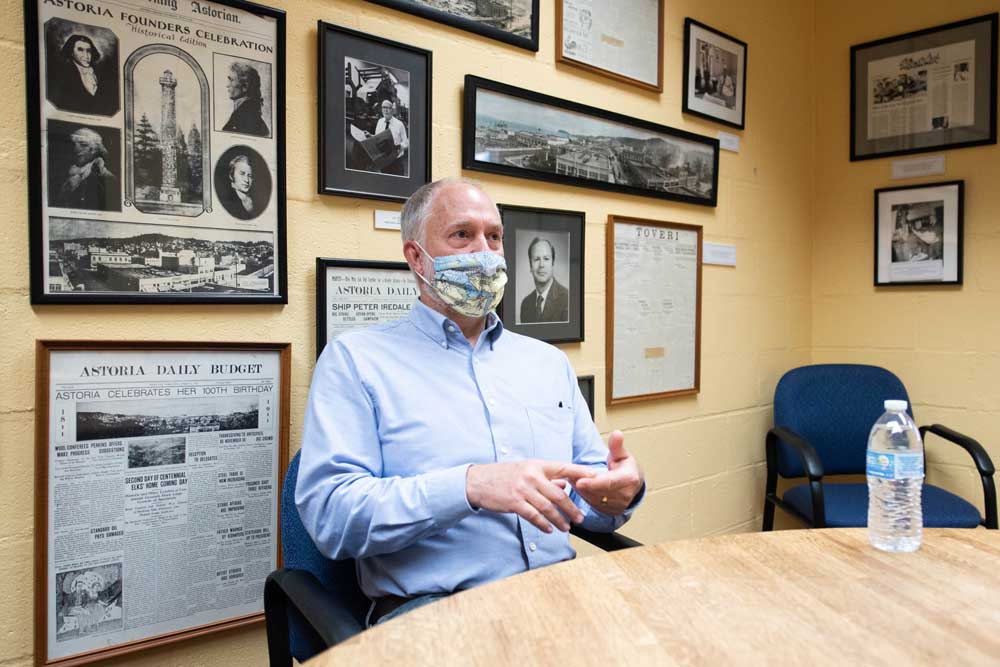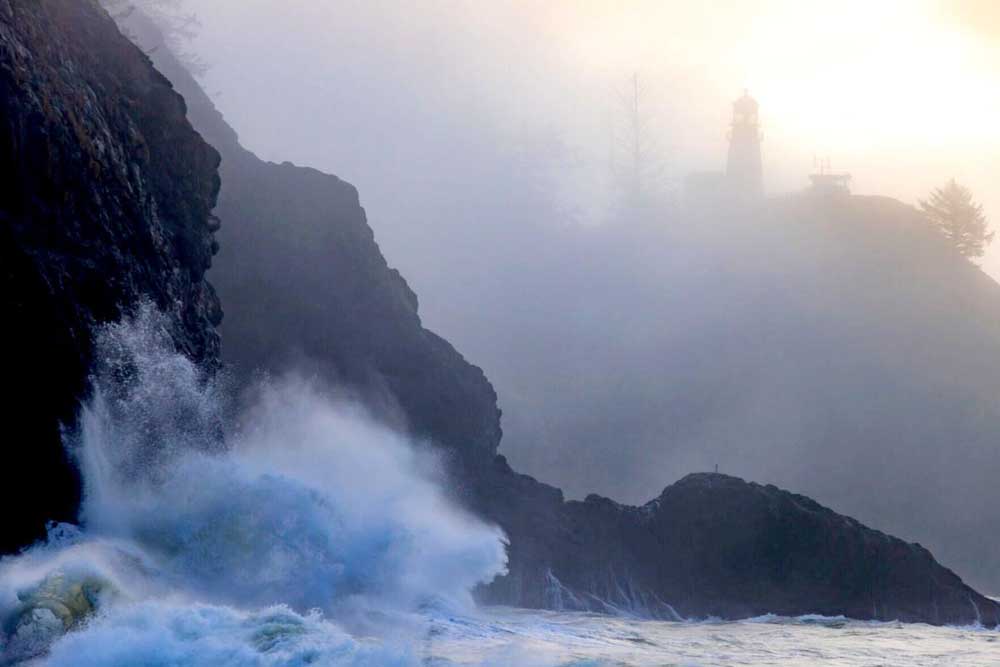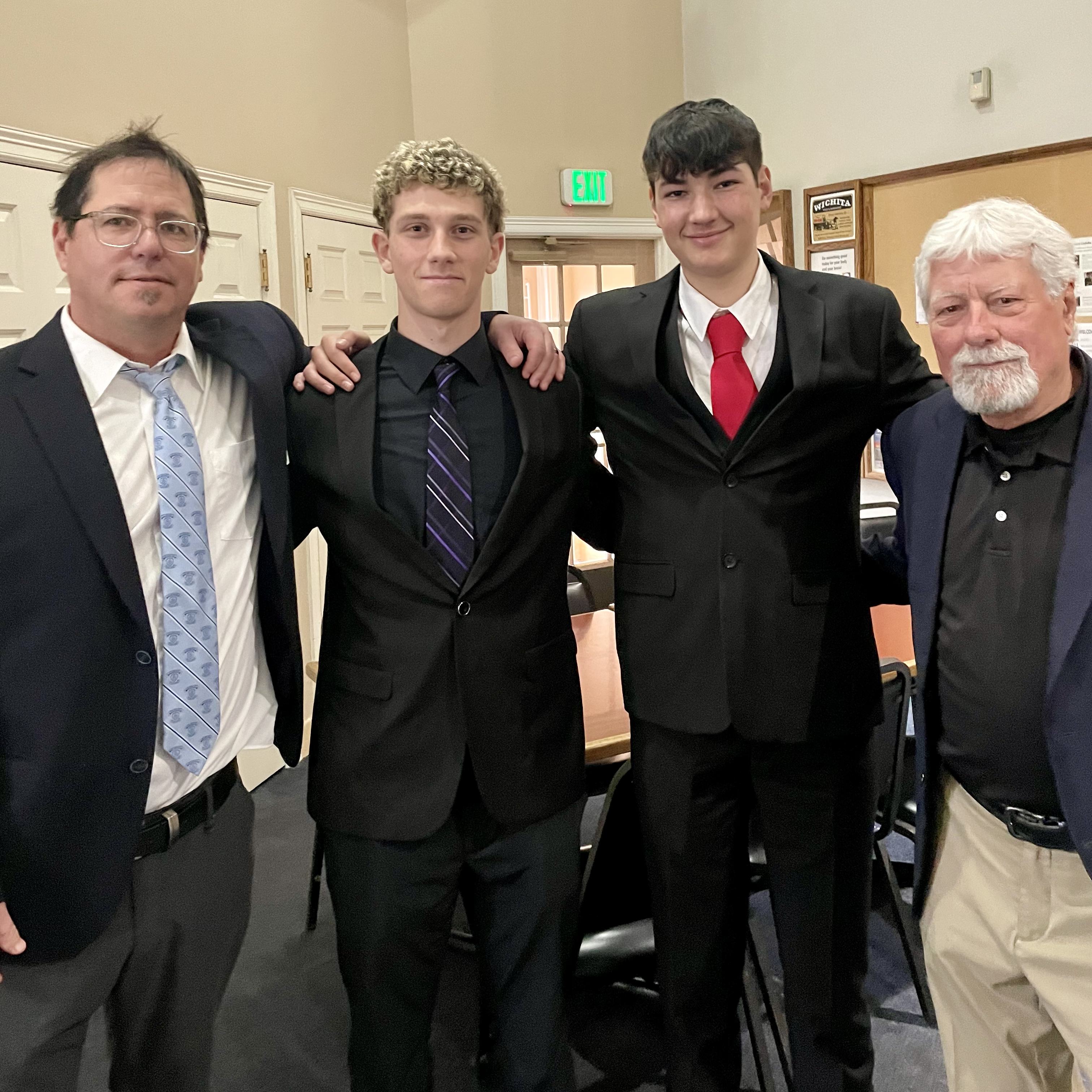Behind the News: ‘It’s like there’s a bunch of invisible hurricanes’
Published 12:30 am Saturday, May 30, 2020

- Bruce Jones is the mayor of Astoria.
Bruce Jones was the commanding officer at the U.S. Coast Guard air station in New Orleans during Hurricane Katrina in 2005, so he has some experience with disasters.
Trending
How does the coronavirus pandemic compare?
“With a hurricane, you see it on radar. You know when it’s coming and within about 48 hours before landfall you know pretty much exactly when it’s going to come and where it’s going to go. And you can prepare physically for it,” he said.
“With the coronavirus, it’s like there’s a bunch of invisible hurricanes, tropical storms, ministorms and they’re all over the country. And you can’t see them on radar. You don’t know when they’re going to pop up. You don’t know if they’re going to pop up.
Trending
“There will be some parts of the country that never get hit.”
Jones, the mayor of Astoria, said another difference is federal leadership.
After a muddled initial reaction, the Bush administration chose Thad Allen — a Coast Guard admiral — as the national leader of a multistate response to the hurricane.
Allen, he said, was “out there in front of the news cameras, in front of the governors and the local officials every day with a clear and coherent national strategy. And he was empowered to execute the strategy by the president. And he inspired confidence that there was a strategy, that resources were coming and they were being taken care of and coordinated.
“I would say that is the exact opposite of what we have here, where we have really no understood national strategy, no confident, coherent messaging of a national strategy. It just kind of ricochets around every day what we’re doing. So each state has kind of been left to its own devices, to a great extent, which I think makes it very difficult.”
In an interview, Jones talked about the optics of lifting government restrictions over the virus after two outbreaks at seafood processors, the pressure to reopen lodging, docking idle cruise ships at the Port of Astoria and the potential for a second wave of cases.
Q: Clatsop County lifted government restrictions over the coronavirus just after two outbreaks at seafood processors. We know the county met the state’s criteria for reopening, but how do you explain the optics to people?
A: We’ve got quite a few questions on that. Why are we reopening when we’ve just had infections? And you do refer to the state guidelines.
The underlying assumption is there’s going to be infections. That has to be something people accept. There will be infections. That is true today. It will be true next month. It will be true in December. It will be true for the indefinite future. There’s going to be infections.
So the question is, what is it that rises, that elevates to the level of risk to where you need to either not loosen restrictions further or actually tighten restrictions back again?
And I do agree with the state’s seven requirements, focused on actual hospitalizations or emergency room visits for COVID-19. And then, of course, the PPE (personal protective equipment) availability, the contact tracing and testing and all that. I think those are pretty good metrics.
Otherwise, you would just be closed down forever if it was just based on you have a couple new infections. And, really, the number we’re talking about is still pretty small, you’d have to say, in relation to the whole county.
Q: The idea behind a phased reopening is that counties have to meet certain benchmarks to move forward. Yet the county already announced that lodging restrictions would be lifted next Friday. Did Cannon Beach and Seaside force everyone’s hand?
A: We talk regularly — the mayors of Cannon Beach, Seaside, Gearhart, Warrenton and Astoria, we talk to each other — and early on we had a unified front with the lodging: Wait till phase two.
At some point, it became apparent there was a crack in the alignment, I’d say, between north and south county. Essentially Seaside, Cannon Beach and then Warrenton, Gearhart, Astoria and the rest of the county.
It’s understandable. Their economies are more heavily tourist-focused than ours are. People talk about Astoria having a tourist economy. We don’t really have a tourist economy. We have an economy which includes tourism as one of the major legs of the chair, but it’s not a primarily tourist economy, whereas theirs are more primarily tourist based.
Since Cannon Beach and Seaside indicated they were going that direction, the other mayors — we talk several times a week with each other —and we’ve all stayed in alignment that we want to stick to the phase two for lodging. And we’ve chosen to go with the incremental approach that the county’s going to use — the 60% (capacity).
… Nationally, it’s a great experiment, because it’s a new disease that’s still poorly understood. So there’s all these experiments going on in different states and cities around the country with what works and what doesn’t work, and everyone has a chance to — you try to learn from other people.
Cannon Beach and Seaside are going to be the experiment for the county. We will see how their populations respond to the lodging now being open at 100% and whether or not they get any spike in infections. What happens in Cannon Beach in the 10 days between when they went to full open on the 26th and June 5, that will help inform, I think, with the rest of the county with what we do.
Q: There was some concern at the county and the city over the Port of Astoria hosting idle cruise ships right after the Bornstein Seafoods outbreak. In hindsight, given the financial hit to the Port, was that the right call?
A: That was absolutely the right call. It’s very unfortunate, though.
I wish — I think I was even quoted in the paper — if they had only been able to get that contract done and get those ships in a week earlier, and it was already in place, and county public health had already talked to the crew, and they had done all the protocols that are required, they were comfortable with it, and then the Bornstein outbreak had taken place, then it would have been manageable.
But there was going to be a burden on county public health in the initial screening and when the ship first got here that was going to take some of their manpower. So it just became undoable to have those two cruise ships arrive just as they were focusing 100% of their manpower on Bornstein, with the contact tracing.
It’s just terrible timing.
Q: You don’t think it was a public relations decision more than public health?
A: No. Absolutely not. I know it wasn’t.
Personally, County Manager (Don) Bohn and I and the Port director spoke. It was absolutely not.
Honestly, I know there’s people in the community that were reaching out to me. They were adamantly opposed to having any cruise ship here ever at any time. I understand that perspective, but it’s not a rational perspective.
So we’re trying to make it science-based and based on what’s best for public health. So it really wasn’t a public relations decision. It was purely a manpower availability in the Public Health Department, because, regardless of what the cruise ship company says they’re going to provide, the burden is going to fall on the locals if there’s an outbreak.
Q: We have been struck by how people on the North Coast – for the most part – have complied with the stay-at-home order and the other government restrictions to contain the virus. What do you think will happen if we get a second wave of cases after the county reopens or in the fall? Will people need to see local hospitalizations or even deaths to shut down again?
A: So because the fact we haven’t had that first wave here in Clatsop County yet — we haven’t had the deaths. I think there may have been one brief hospitalization, if any.
What I have observed is that our Public Health Department at the county and the hospitals are coordinating constantly — seven days a week, 24/7 — they’re very well-prepared. And they’ll be even better prepared as every month goes by.
So if we do have the big wave in the summer or the quote-unquote second wave in the fall or the winter, I’m confident they’re going to be well-prepared.
The economy will be the greater concern, I think, at that point. What will be the state of the economy when fall and winter come around, if there is a big spike in infections here in Clatsop County?
How will the state and federal government be prepared better the second time around with more targeted and appropriate and timely assistance? This time around it was kind of just, get something out there.
And, at the state level, of course, there’s been an absolute disaster in the timeliness of unemployment assistance. In some cases, people have waited eight weeks now and still haven’t gotten their unemployment assistance. Will that be fixed by the next wave?
And will the federal government be able to quickly step in with appropriate assistance to the affected businesses?









